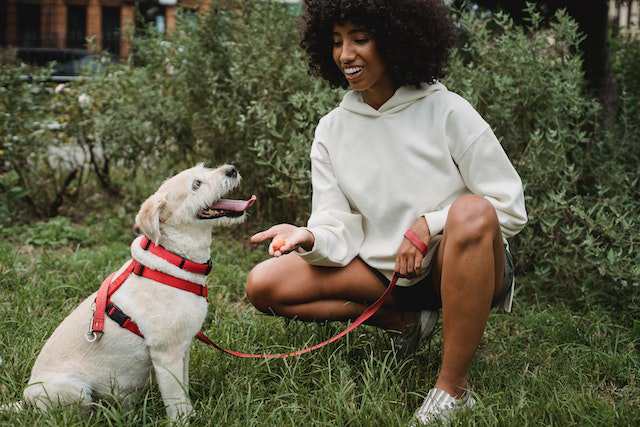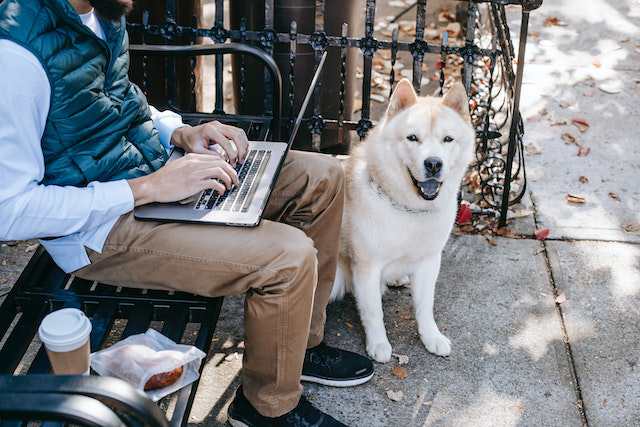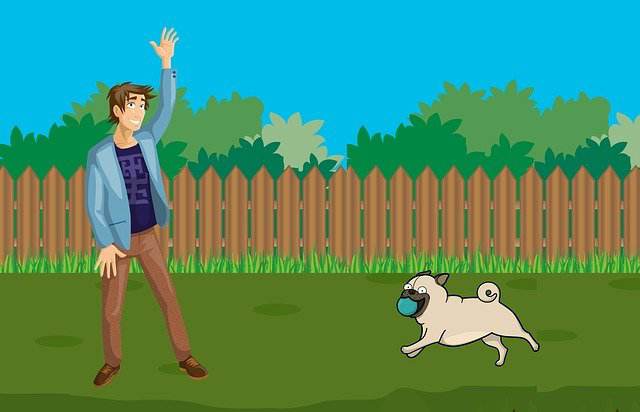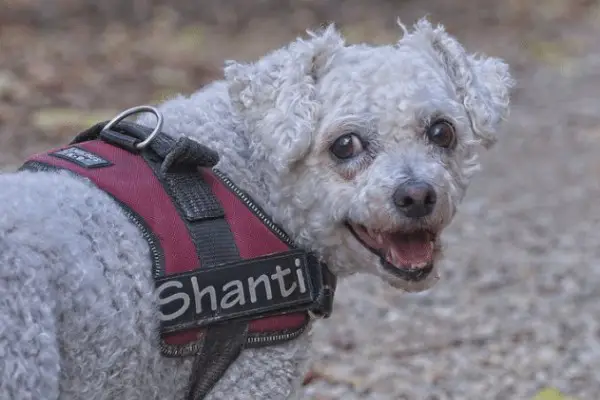14 Strategies for Preventing Aggression in Dogs

Have you ever wondered how to keep your furry friends from getting a bit too feisty?
Well, fear not, because today we’re diving into the topic of preventing aggression in dogs.
Join me as we explore some simple yet effective strategies to ensure a harmonious and peaceful life with our beloved canine companions.
So, let’s get started, shall we?
Preventing Aggression in Dogs
To prevent dog aggression, it is essential to focus on socialization and training from an early age.
Exposing puppies to various people, animals, and environments can help them develop positive associations and reduce fear-based aggression.
Consistent obedience training and positive reinforcement techniques can also promote good behavior and prevent aggression.
Additionally, providing mental and physical stimulation through exercise and interactive play can help channel a dog’s energy in a positive way, reducing the likelihood of aggressive behaviors.
Regular veterinary check-ups are crucial to identify any underlying medical issues that may contribute to aggression.
Read more about stopping aggression in dogs.
Strategies for Preventing Dog Aggression
The following are some common strategies for preventing dog aggression:
1. Early Socialization
Early socialization is crucial in preventing dog aggression as it helps puppies develop positive associations with various people, animals, and environments.
By exposing them to different stimuli, such as different sounds, smells, and sights, puppies learn to be comfortable and confident in different situations.
For example, taking a puppy to puppy classes where they interact with other puppies and people can help them learn appropriate social skills and reduce the likelihood of aggression later in life.
2. Positive Reinforcement Training
Positive reinforcement training is an effective strategy for preventing dog aggression by rewarding desired behaviors and ignoring or redirecting unwanted behaviors.
For instance, if a dog shows aggression towards another dog, redirecting their attention to positive behavior, like sitting or lying down, and rewarding them with treats or praise can help them associate calm behavior with positive outcomes.
This helps dogs learn alternative behaviors and reduces the likelihood of aggressive responses.
3. Proper Obedience Training
Proper obedience training is essential for preventing dog aggression, as it establishes clear communication between the dog and owner.
Teaching basic commands like sit, stay, and leave it, not only helps dogs understand boundaries but also helps owners manage their behavior effectively.
For example, if a dog starts showing signs of aggression, a well-trained dog can be commanded to sit or stay, redirecting their focus and preventing escalation. This promotes better control and prevents aggressive behaviors from developing.
4. Understanding Canine Body Language
To prevent dog aggression, it is crucial to understand and interpret canine body language.
By recognizing signs of stress, fear, or aggression, you can intervene before a situation escalates. For example, if a dog displays a tense body posture, raised hackles, or a stiff tail, it may indicate aggression.
By being aware of these signals, you can remove the dog from the triggering situation and create a safer environment.
5. Establishing Yourself as a Calm and Assertive Leader
Dogs are pack animals and thrive in environments with clear leadership. Establishing yourself as a calm and assertive leader can help prevent aggression.
For instance, using consistent and positive reinforcement techniques to train your dog to follow commands can establish you as the pack leader.
By setting boundaries and providing structure, you create a sense of security and reduce the likelihood of aggressive behavior.
6. Providing Regular and Proper Exercise and Mental Stimulation
Dogs need physical exercise and mental stimulation to prevent boredom and frustration, which can lead to aggression.
Regular walks, playtime, and engaging activities like puzzle toys or training sessions can help channel their energy in a positive way.
For instance, taking your dog for a daily run or engaging in interactive games like fetch can tire them out and reduce the chances of aggressive behavior.
Mental stimulation, such as teaching new tricks or providing food puzzles, can also keep their minds occupied and prevent boredom-related aggression.
By addressing their physical and mental needs, you create a well-balanced dog less likely to display aggressive tendencies.
7. Educate Yourself About Dog Aggression
To prevent dog aggression, educate yourself about the signs and triggers of aggression.
Understand the different types of aggression, such as fear aggression, territorial aggression, and resource guarding.
For example, if you notice that your dog becomes aggressive when approached while eating, it could be a sign of resource guarding.
By recognizing these signs, you can take appropriate measures to prevent aggression, such as avoiding triggering situations or seeking professional help.
8. Spaying and Neutering Your Dog
Spaying and neutering can help reduce the likelihood of dog aggression, especially in males.
Hormonal changes can contribute to aggressive behavior, particularly in intact males.
For instance, intact males may display territorial aggression or be more prone to roaming and fighting with other dogs.
By spaying or neutering your dog, you can reduce these hormonal influences, making them less likely to exhibit aggressive behavior.
9. Avoid Punishment-Based Training
Using punishment-based training methods, such as physical corrections or harsh reprimands, can escalate aggression in dogs.
Punishment may instill fear or anxiety, leading to defensive or aggressive responses. Instead, opt for positive reinforcement training techniques, rewarding desirable behaviors with treats or praise.
For example, if your dog remains calm when meeting new people, reward them with a treat.
This approach helps build a positive association and reinforces good behavior, decreasing the likelihood of aggression.
10. Establish Consistent Rules and Boundaries
Dogs thrive on structure and consistency. Establishing clear rules and boundaries helps prevent confusion and reduces the likelihood of aggression.
For instance, if your dog is not allowed on the furniture, enforce this rule consistently. Inconsistency can lead to frustration, which may manifest as aggression.
By providing clear guidelines and reinforcing them consistently, you create a stable environment that promotes calm behavior and reduces the risk of aggression.
11. Always Supervise Your Dog Playtime
It is crucial to closely monitor your dog during playtime to prevent aggression.
For example, if two dogs are playing and one starts to show signs of aggression, such as growling or stiff body language, immediate intervention can prevent a potential fight.
Strategies for preventing dog aggression during playtime include redirecting their attention with toys or treats, separating the dogs temporarily to calm them down, or using positive reinforcement to reward appropriate play behavior.
12. Teach Your Dog Bite Inhibition
Teaching your dog bite inhibition is essential to prevent aggressive behaviors.
For instance, during puppyhood, it is important to socialize them with other dogs and people, exposing them to various stimuli.
This helps them learn to control the force of their bite and understand that biting leads to negative consequences.
Strategies to teach bite inhibition include providing appropriate chew toys, using positive reinforcement to reward gentle play, and using a firm but gentle “no” command to discourage biting.
Read more about how to know an aggressive dog.
13. Create a Safe and Comfortable Environment for Your Dog
A safe and comfortable environment plays a crucial role in preventing dog aggression.
For example, providing your dog with a designated space where they feel secure and have their own resources, such as toys and water bowls, can reduce territorial aggression.
Additionally, ensuring that your dog receives enough physical and mental stimulation through regular exercise and enrichment activities can prevent boredom-related aggression.
14. Consult a Professional If Needed
If you are unable to address or manage your dog’s aggression on your own, it is important to consult a professional, such as a certified dog trainer or animal behaviorist.
They can provide expert guidance and develop a tailored behavior modification plan for your dog.
Professional intervention may include techniques like desensitization and counter-conditioning, where dogs are gradually exposed to triggers that provoke aggression in a controlled and positive way.
By implementing these strategies, dog owners can effectively prevent dog aggression and promote a safe and harmonious environment for their pets and those around them.
Read more about things that lead to dog aggression.
Frequently Asked Questions
Why is it important to prevent aggression in dogs?
Preventing aggression in dogs is crucial for the safety and well-being of both humans and other animals. Aggression can lead to serious injuries or even fatalities, and it can also result in legal consequences for the dog owner. By addressing aggression early on and implementing preventive measures, we can create a safer environment for everyone.
How can I identify signs of aggression in my dog?
Dogs exhibit various signs of aggression, including growling, snarling, baring teeth, lunging, or biting. Other warning signs may include raised fur, stiff body posture, and intense staring. It’s crucial to be aware of these signs and address them promptly to prevent any escalation.
What are some strategies for preventing dog aggression?
Firstly, early socialization is key. Introduce your dog to various people, animals, and environments from a young age to help them become comfortable and confident. Secondly, provide consistent and positive training to establish clear boundaries and reinforce good behavior. Additionally, proper exercise, mental stimulation, and a balanced diet contribute to overall well-being, reducing the likelihood of aggression.
How can I manage aggression in my dog’s interactions with other dogs?
When introducing your dog to other dogs, it’s important to do so in a controlled and supervised manner. Start with neutral, calm environments and slowly progress. Observe their body language closely, and intervene if necessary. Utilizing positive reinforcement techniques and rewarding calm behavior can also help manage aggression during dog-to-dog interactions.
What should I do if my dog shows signs of aggression towards humans?
If your dog displays aggression towards humans, it’s crucial to prioritize safety. Consult with a professional dog trainer or behaviorist who specializes in aggression to assess the situation and provide guidance. They can help identify triggers and develop a tailored behavior modification plan to address the aggression effectively.
Are certain breeds more prone to aggression?
While certain dog breeds may have traits that make them more likely to exhibit aggressive behavior, it’s essential to remember that individual temperament varies within each breed. Factors such as socialization, training, and environment play significant roles in a dog’s behavior. It’s important not to stereotype or discriminate against specific breeds based solely on reputation. Responsible ownership, training, and early intervention are key to preventing aggression in all dogs, regardless of breed.
Read more about different forms of dog aggression.
Conclusion
Remember, preventing aggression in dogs starts with understanding their needs and providing proper socialization and training.
By addressing any dog behavioral issues early on and creating a safe and loving environment, you can help your furry friend live a happy and harmonious life.
So, let’s be proactive and give our four-legged companions the love and guidance they deserve!

![Fear Aggression in Dogs [Signs, Causes & More] Fear Aggression in Dogs](https://petcreeks.com/wp-content/uploads/2023/10/barking-1819740_640.jpg)




![Territorial Behavior in Dogs [Signs, Causes, & Solutions] Territorial Behavior in Dogs](https://petcreeks.com/wp-content/uploads/2023/10/pexels-lucas-pezeta-2034913.jpg)